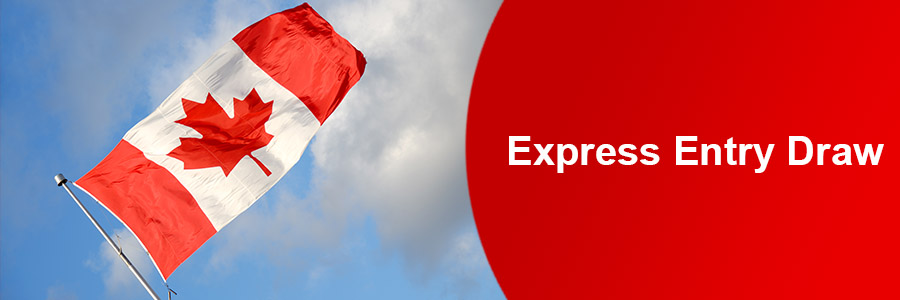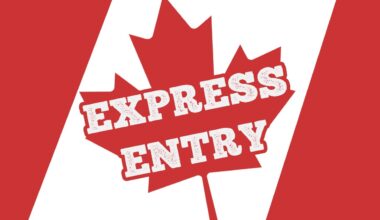Small but Significant
In what appears to be the most selective Express Entry draw of 2025, Immigration, Refugees and Citizenship Canada (IRCC) invited just 125 Provincial Nominee Program candidates on June 10, with an unusually high CRS cutoff of 784 points. This marks the third draw under new Immigration Minister Lena Metlege Diab and signals a potential shift toward more targeted, smaller-volume selections.
Breaking Down the June 10 Numbers
The latest PNP draw stood out for several reasons:
- Smallest draw of 2025: Only 125 ITAs issued, significantly lower than previous PNP draws
- Highest CRS threshold: 784 points required, well above recent PNP draws
- Established candidates only: Profile creation deadline of September 12, 2024
- Quick succession: Third draw in just over a week under the new minister
With provincial nominees receiving 600 additional CRS points, successful candidates needed base scores of approximately 184 points – still relatively accessible for well-qualified candidates with provincial backing.
What Makes This Draw Different?
Size Matters: Why Only 125 Invitations?
The dramatic reduction in draw size compared to recent PNP selections raises important questions:
| Date | PNP ITAs | CRS Cutoff | Pattern Observation |
|---|---|---|---|
| June 2, 2025 | 277 | 726 | Regular-sized draw |
| May 12, 2025 | 511 | 706 | Larger volume |
| April 28, 2025 | 421 | 727 | Moderate size |
| June 10, 2025 | 125 | 784 | Significantly smaller |
“This smaller draw size could indicate several things,” explains immigration consultant Sarah Mitchell. “Either there are fewer qualified PNP candidates in the pool, or IRCC is being more selective in line with the government’s commitment to sustainable immigration levels.”
The High CRS Threshold Mystery
The 784-point requirement represents the highest PNP cutoff in recent months. This could reflect:
Pool Dynamics: Higher-scoring candidates may have accumulated in the pool since the September 2024 profile deadline Strategic Selection: IRCC may be prioritizing the most competitive candidates even within the PNP category Processing Capacity: Smaller draws might reflect current processing constraints or strategic pacing
Reading the Tea Leaves: What This Signals About Policy Direction
Minister Diab’s Early Approach
After just three draws under the new Immigration Minister, some patterns are emerging:
Continued Prioritization: PNP candidates remain central to Canada’s immigration strategy Measured Pace: Smaller, more frequent draws rather than large, sporadic ones Quality Focus: Higher thresholds suggesting emphasis on top-tier candidates
Alignment with Carney’s Mandate
This approach aligns with Prime Minister Carney’s mandate to attract “the best talent” while maintaining “sustainable levels”:
- Selectivity over volume: Choosing fewer, but highly qualified candidates
- Provincial partnership: Maintaining strong PNP focus
- Strategic pacing: Avoiding immigration surges that strain infrastructure
Impact on Different Candidate Categories
High-Scoring PNP Candidates
If you’re a provincial nominee with strong base credentials, this draw demonstrates that opportunities exist for top-tier candidates.
Moderate-Score PNP Holders
With the high cutoff, many provincial nominees may need to wait for future draws or focus on improving their base CRS scores.
Non-PNP Candidates
The continued focus on provincial nominees reinforces that PNP remains the most reliable pathway to Express Entry selection.
Provincial Nomination: Still Your Best Bet
Despite the high cutoff, this draw reinforces that provincial nomination remains the clearest pathway to Express Entry success:
Why Provinces Are Key
Regional Expertise: Provinces understand their specific labor market needs Integration Support: Provincial nominees often have better settlement outcomes Geographic Distribution: Helps spread immigration benefits across Canada Economic Alignment: Candidates selected for specific regional opportunities
Which Provinces Are Active?
Recent trends show strong nomination activity from:
Ontario: Technology workers, healthcare professionals, and skilled trades British Columbia: Tech sector focus and pilot programs for priority occupations Alberta: Energy sector workers and technology professionals Atlantic Provinces: Coordinated approach targeting various skill levels Prairie Provinces: Agriculture, healthcare, and technology workers
The Bigger Picture: 2025 Express Entry Trends
With 35,342 ITAs issued so far in 2025, the distribution shows clear government priorities:
| Stream Type | Draws | Total ITAs | Average per Draw |
|---|---|---|---|
| PNP | 10 | 4,988 | 499 |
| French Language | 3 | 18,500 | 6,167 |
| CEC | 4 | 9,850 | 2,463 |
| Healthcare | 2 | 1,000 | 500 |
| Education | 1 | 1,000 | 1,000 |
Key Observations
PNP Consistency: Regular draws maintain steady invitation flow French Priority: Large draws show commitment to francophone immigration Category Focus: Sector-specific draws address targeted labor needs Reduced General Draws: No all-program draws reflect strategic selectivity
Strategic Implications for Candidates
If You’re a Provincial Nominee
Stay Ready: Small draws can happen quickly – ensure your documentation is current Improve Base Scores: Higher cutoffs mean base CRS scores matter more Monitor Trends: Watch for patterns in draw timing and size
If You’re Seeking Provincial Nomination
Research Thoroughly: Understand which provinces align with your profile Build Connections: Genuine ties to provinces strengthen applications Consider Multiple Provinces: Different provinces have different selection criteria
For All Express Entry Candidates
Update Profiles Regularly: Ensure all information remains current and accurate Language Investment: Higher language scores provide flexibility across all streams Long-term Planning: Consider multiple pathways rather than relying on single strategies
Processing and Timeline Considerations
Post-ITA Requirements
The 125 candidates who received ITAs must now:
- Submit complete applications within 60 days
- Provide all required documentation
- Maintain provincial nomination validity
- Demonstrate settlement funds
Current Processing Times
IRCC continues to aim for six-month processing of complete applications, though:
- Complete applications process faster
- Missing documents cause delays
- Provincial nominees often have priority processing
Looking Forward: Predictions and Trends
Short-term Expectations (Next 2-3 months)
Continued PNP draws: Regular selections likely to continue Variable sizes: Draw volumes may fluctuate based on pool dynamics Category-based consistency: Healthcare, education, and French draws expected
Medium-term Outlook (Fall 2025)
New immigration levels plan: Next year’s targets will influence draw patterns Policy refinements: Minister Diab may introduce operational improvements Economic alignment: Draws will reflect evolving labor market needs
The Minister Diab Factor
Three draws into her tenure, some observations about the new minister’s approach:
Continuity with Evolution
Maintained frameworks: Core Express Entry structure unchanged Refined execution: Smaller, more targeted draws Strategic timing: Regular but measured pace
Provincial Experience Benefits
Her background as Nova Scotia’s Immigration Minister brings: Federal-provincial understanding: Better coordination potential Regional perspective: Appreciation for diverse provincial needs Practical experience: Understanding of what works in practice
Practical Advice for Success
For Current Pool Members
- Keep profiles updated: Ensure all information remains accurate
- Monitor draw patterns: Understand timing and trends
- Improve scores where possible: Language, education, experience
- Consider provincial nomination: Often the most reliable pathway
For Prospective Applicants
- Research provincial programs: Find the best fit for your profile
- Build Canadian connections: Work experience, education, or family ties
- Maximize base CRS score: Focus on factors you can control
- Plan for the long term: Immigration is a marathon, not a sprint
The Misrepresentation Warning
The article’s reminder about accurate information is crucial. With higher competition:
- Double-check all details: Errors can have serious consequences
- Update promptly: Changes in circumstances must be reflected
- Seek professional help: When in doubt, consult qualified professionals
- Understand consequences: Misrepresentation can affect future applications
Conclusion: Quality Over Quantity

The June 10 draw, while small, sends important signals about Canada’s immigration direction under new leadership. The focus on highly qualified provincial nominees aligns with broader government goals of sustainable, strategic immigration.
For candidates, the message is clear: provincial nomination remains the most reliable pathway, but competition is intensifying. Success requires not just meeting minimum requirements, but standing out among qualified candidates.
As Minister Diab continues to shape Express Entry operations, expect continued emphasis on provincial partnerships, targeted selection, and quality over quantity. This approach may result in smaller but more strategic draws that better serve both Canada’s economic needs and candidates’ settlement success.
The path to Canadian permanent residence through Express Entry remains open, but it increasingly rewards preparation, strategic thinking, and alignment with Canada’s specific economic and regional priorities.
Sources:






